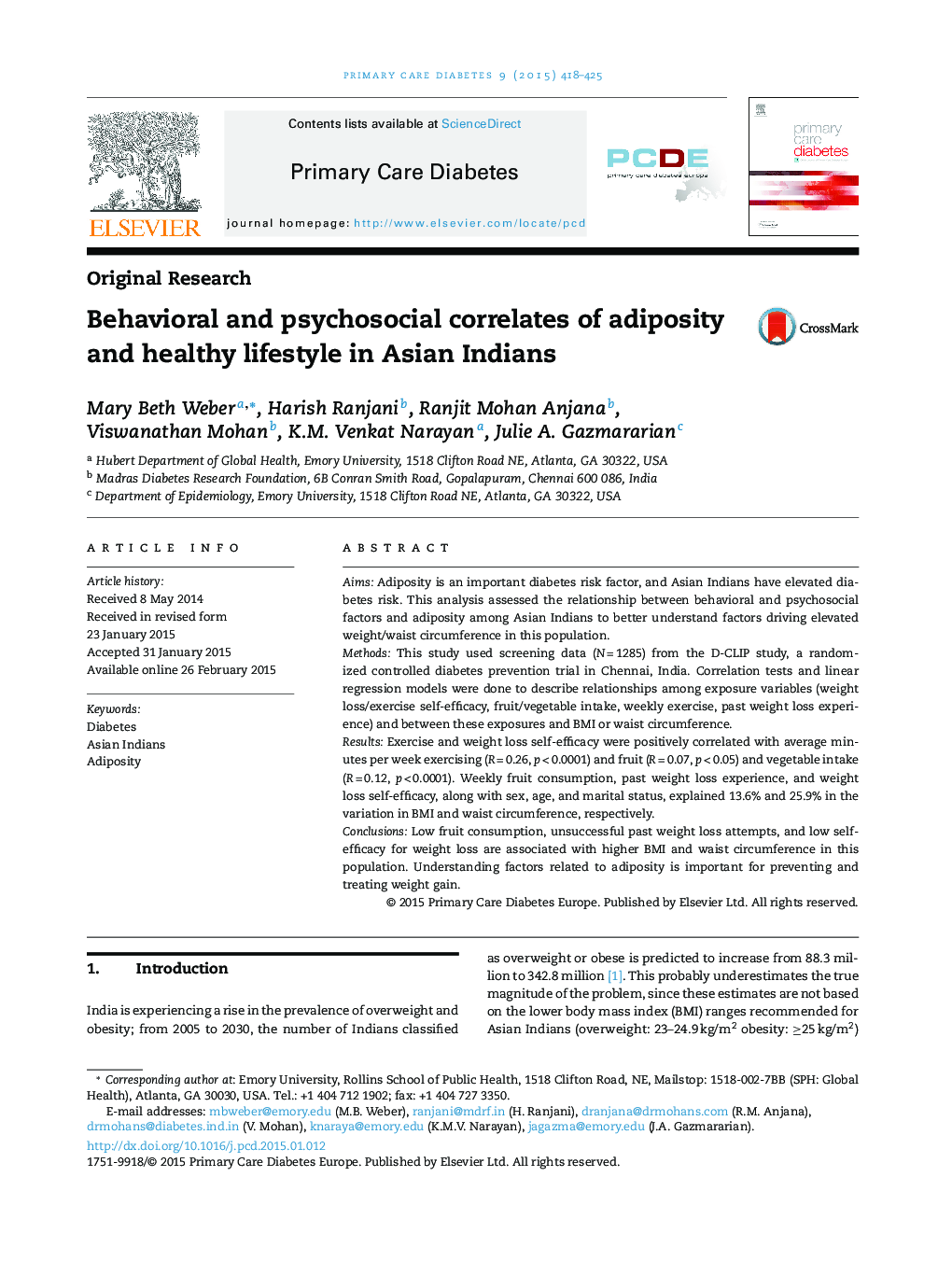| Article ID | Journal | Published Year | Pages | File Type |
|---|---|---|---|---|
| 2675429 | Primary Care Diabetes | 2015 | 8 Pages |
•We modeled behavioral/psychosocial factors and adiposity in Asian Indians.•Fruit intake and weight loss history and self-efficacy correlated with adiposity.•These factors plus sex, age, and marital status explained 13.6% of BMI variability.•The same factors explained 25.9% of variability in waist circumference.
AimsAdiposity is an important diabetes risk factor, and Asian Indians have elevated diabetes risk. This analysis assessed the relationship between behavioral and psychosocial factors and adiposity among Asian Indians to better understand factors driving elevated weight/waist circumference in this population.MethodsThis study used screening data (N = 1285) from the D-CLIP study, a randomized controlled diabetes prevention trial in Chennai, India. Correlation tests and linear regression models were done to describe relationships among exposure variables (weight loss/exercise self-efficacy, fruit/vegetable intake, weekly exercise, past weight loss experience) and between these exposures and BMI or waist circumference.ResultsExercise and weight loss self-efficacy were positively correlated with average minutes per week exercising (R = 0.26, p < 0.0001) and fruit (R = 0.07, p < 0.05) and vegetable intake (R = 0.12, p < 0.0001). Weekly fruit consumption, past weight loss experience, and weight loss self-efficacy, along with sex, age, and marital status, explained 13.6% and 25.9% in the variation in BMI and waist circumference, respectively.ConclusionsLow fruit consumption, unsuccessful past weight loss attempts, and low self-efficacy for weight loss are associated with higher BMI and waist circumference in this population. Understanding factors related to adiposity is important for preventing and treating weight gain.
